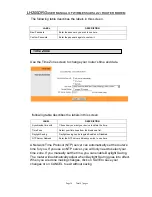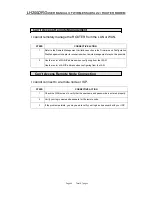
L
L
H
H
2
2
0
0
0
0
D
D
R
R
G
G
U
U
S
S
E
E
R
R
M
M
A
A
N
N
U
U
A
A
L
L
O
O
F
F
W
W
I
I
R
R
E
E
L
L
E
E
S
S
S
S
A
A
D
D
S
S
L
L
2
2
/
/
2
2
+
+
R
R
O
O
U
U
T
T
E
E
R
R
M
M
O
O
D
D
E
E
M
M
UPnP
Universal Plug and Play (UPnP) is an open networking standard that
uses TCP/IP for simple peer-to-peer network connectivity between
devices. An UPnP device can dynamically join a network, obtain an IP
address, convey its capabilities and learn about other devices on the
network. A device can leave a network smoothly and automatically when
it is no longer in use.
T
he
f
ollowing table describes the labels in this screen.
LABEL
DESCRIPTION
UPnP
UPnP can be toggled Activated or Deactivated.
Auto-configured
Auto-configuration can be toggled Activated or Deactivated (by
UPnP-enabled Application).
Default setting is set to
Deactivated
.
When you are done making changes,
click on SAVE to save your changes.
DDNS
Dynamic DNS (DDNS) allows you to update your current dynamic IP
address with one or many dynamic DNS services so that anyone can
contact you through various applications. You can also access your FTP
server or Web site on your own computer using a DNS-like address that
will never change instead of using an IP address that changes each time
you reconnect. Your friends or relatives will always be able to call you
even if they don't know your IP address.
You need to have registered a dynamic DNS account with
www.dyndns.org. This is for people with a dynamic IP from their ISP or
DHCP server that would still like to have a DNS name. The Dynamic
DNS service provider will give you a password or key.
To change your Router’s DDNS, Click on DDNS. The screen appears as
shown.
Page 35 Total 47 pages












































